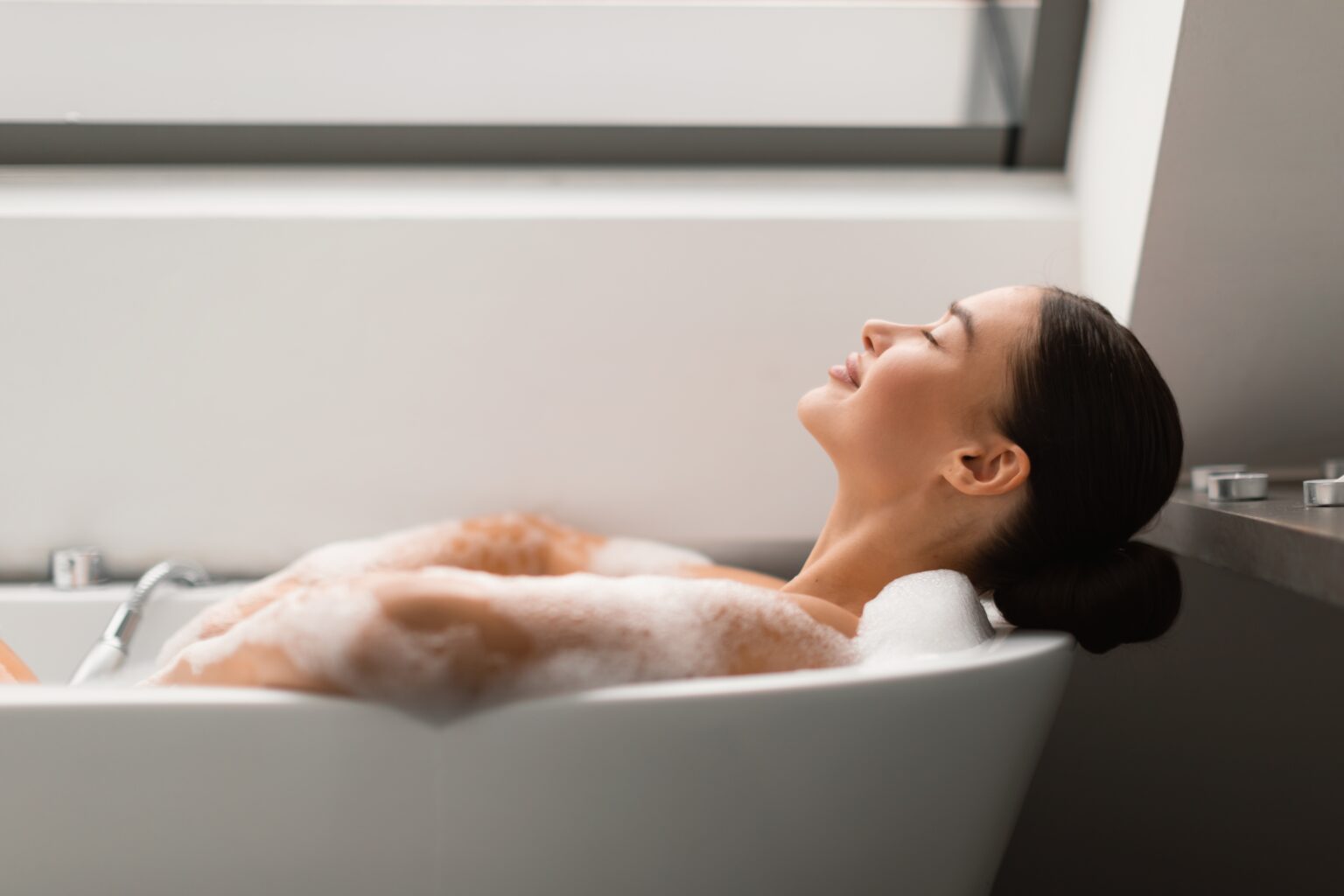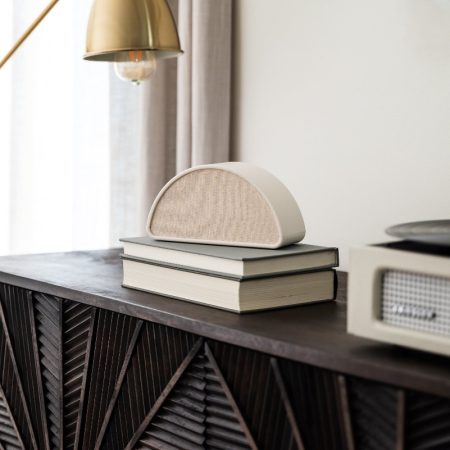Taking a regular bath can be more than just an exercise in cleanliness. It’s a ritual that has the potential to significantly impact one’s health and wellbeing. Immersion in warm water offers a myriad of benefits, from improving cardiovascular function to soothing the nervous system. In particular, the warmth of the water encourages the heart to beat faster, which can provide a gentle workout for the cardiovascular system, and aid in reducing stress levels by encouraging the release of neurotransmitters like serotonin.
Moreover, the act of taking a bath can foster feelings of contentment and relaxation. It has been found that the body responds to the comforting warm water by releasing endorphins, the body’s natural feel-good chemicals. In this tranquil environment, the mind has the opportunity to unwind and destress, which can be particularly beneficial in today’s fast-paced world where stress-related health issues are prevalent. The reduction of stress hormones, such as cortisol, can contribute to a balanced and more relaxed state of mind, which is vital for overall health.
Beyond mental health, baths can contribute to the alleviation of physical discomfort. Warm baths can help soothe muscle aches, ease fatigue, and offer a form of relief for some chronic pain conditions. As individuals seek out methods to improve their health that align with their lifestyles, incorporating regular warm baths can be an effective and enjoyable way to support both mental and physical health.
The Science of Baths and Body Health
This section explores how regular bathing can contribute to overall body health, specifically focusing on the skin, circulatory system, muscles and joints, sleep patterns, mental well-being, and respiratory functions.
Understanding the Impact on Skin and Hygiene
Bathing plays a crucial role in maintaining good personal hygiene, helping to remove dirt and bacteria from the skin. Warm water can open up pores, allowing for a deeper cleanse, while also potentially providing relief for conditions such as eczema, when complemented with appropriate oils and moisturisers.
Bathing and Circulatory Health
Immersing oneself in warm water can have positive effects on heart health. The heat from the bath can improve circulation by causing blood vessels to dilate, which may help lower blood pressure and improve overall blood flow.
Effects on Muscles and Joints
A warm bath can be soothing for sore muscles and stiff joints following exercise. The water’s buoyancy reduces the weight bearing on joints, providing relief and promoting quicker recovery of muscular tissues.
The Role in Sleep Improvement
Engaging in a bathing ritual before bedtime can significantly enhance sleep quality. Warm baths may adjust the body’s core temperature, a signal that can align with the circadian rhythm, indicating it’s time for sleep, thus facilitating deeper relaxation and a swifter onset of sleep.
Influence on Mental Well-being
The act of taking a bath can be a form of relaxation that reduces levels of stress and anxiety. This stress relief is likely due to the combination of isolation, warmth, and comfort that stimulates the production of serotonin, leading to feelings of contentment and happiness.
Temperature Regulation Through Bathing
Bathing allows for control over body temperature, with warm water raising one’s core body temperature. Conversely, a cooler bath can be refreshing and help bring down the body temperature on hot days or after fever.
Passive Heating and Health
Hot water baths serve as a form of passive heating for the body, akin to a full-body heat treatment. Studies have suggested that regular passive heating can have benefits analogous to those of exercise, including reduced risk of heart disease and improved control of blood sugar levels.
Bathing and Respiratory Function
For respiratory health, steam from a hot bath may help in clearing the nasal passages and improving lung capacity. Individuals with chronic lung disease or asthmatics may find symptomatic relief through the humidity and warmth of a bath.
Therapeutic Benefits of Specific Bathing Practices
Bathing is not merely about hygiene; it has considerable therapeutic benefits, too. From easing tension to soothing muscles, the right bathing practices can enhance relaxation and promote health.
Hot Baths and Their Advantages
Hot baths are frequently associated with the release of serotonin and other neurotransmitters that can induce relaxation and reduce feelings of stress. The heat from the water stimulates the parasympathetic nervous system, which helps the body to rest and digest, thereby alleviating tension and promoting a state of calm.
Adding Epsom Salts to Your Routine
Incorporating Epsom salts, or magnesium sulphate, into a bath routine aids in replenishing magnesium levels through the skin. Magnesium is essential for numerous body functions and can help in reducing inflammation, easing muscle soreness, and improving sleep quality.
Essential Oils and Aromatherapy
Adding natural oils such as eucalyptus, peppermint, and rosemary to a bath can have an aromatherapeutic effect. Aromatherapy with these essential oils is known to have psychological and physical benefits, contributing to reduced stress levels and improved respiratory function through inhalation of the vapours.
Contrasting Heat with Ice Baths
Contrary to hot baths, ice baths and cold plunges are used as a form of heat treatment. A study in the Journal of Applied Physiology suggests that immersion in cold water can help mitigate muscle soreness after exercise. This practice can lead to a meta-analysis of improved recovery by reducing inflammation and stimulating blood flow.
The Practice of Sauna Bathing
Sauna bathing involves short periods of exposure to high-temperature steam or dry heat, followed by cooling down periods. This cycle is believed to aid in detoxification, enhance cardiovascular health, and promote relaxation through sweating and increased heart rate, similar to mild exercise.
Cultural and Historical Context of Bathing
Bathing has been integral to various cultures for centuries, reflecting a compelling tapestry of history, well-being, and social dynamics. The roots of bathing practices are often entwined with religious rituals and healing traditions.
In ancient Rome, bathing was a communal activity central to daily life. The Roman baths were sophisticated facilities that combined hygiene, social interaction, and leisure. They were renowned for their lavish design, often featuring sophisticated water systems that created hot springs for visitors to enjoy a hot soak. Beyond their hygienic function, these baths served as hubs for healing and exchanging medical knowledge.
In the Far East, particularly in Japan, the tradition of onsen—natural hot springs—has been a well-being practice for millennia. Onsens are considered therapeutic and are valued for their healing properties, especially due to the mineral content of the water.
Throughout history, various cultures have looked upon the practice of taking a bath as more than just cleansing the body. For instance, some societies would partake in healing ritual baths, believed to purify not just in a physical sense but also spiritually.
In modern times, the notion of bathing for well-being persists with an emphasis on the mental health benefits. A warm bath can be a sanctuary, providing solace and a space for solitary reflection. The act of bathing can generate a physiological response, releasing neurotransmitters such as serotonin, which are associated with contentment and relaxation.
Consistently, whether in historical or contemporary contexts, bathing transcends its basic hygienic purpose, symbolising a state of well-being and acting as a practice of self-care.
Modern Bathing Trends and Personal Preference
In contemporary society, the trends surrounding bathing preferences have evolved significantly, with a diverse range of options available, tailored to individual needs and desires. Showers, often prized for their convenience and time-saving attributes, are a staple in many American households. The escalation of busy lifestyles has cemented the shower’s position as a practical choice for day-to-day hygiene.
Tubs, on the other hand, represent a leisurely alternative, enabling a more relaxed and therapeutic bathing experience. Personal preference plays a crucial role in deciding whether one opts for the brisk efficiency of a shower or the indulgent soak of a bath. Bathing in a tub provides a quiet refuge for many, offering respite from the fast-paced external environment.
Current trends also indicate a growing emphasis on the bathroom as a haven for wellbeing, with individuals selecting bathing options that best align with their health and relaxation goals. The choice between showers and baths may also be influenced by spatial constraints within homes, with some Americans prioritising tubs as a luxury when space permits.
Here is a brief breakdown of preferences:
- Showers:
- Favoured for quick and efficient cleansing.
- Often chosen by individuals with less time or smaller living spaces.
- Tubs:
- Associated with relaxation and the promotion of mental wellbeing.
- Selected for therapeutic benefits, such as muscle relaxation and stress reduction.
Ultimately, the modern trend veers towards personalising the bathing experience, with many Americans tailoring their choice of shower or tub to align with their lifestyle, preferences, and wellbeing.
Lifestyle and Health Considerations
Incorporating baths into one’s routine can have multifaceted health benefits that cater to various lifestyle needs, from aiding athletic recovery to managing health conditions. With the right approach, baths can serve as a therapeutic tool to enhance overall well-being.
Balancing Athletic Needs with Recovery Baths
For athletes, engaging in intensive exercise can lead to muscle soreness and fatigue. Recovery baths can expedite the healing process, as immersing the body in warm water helps increase blood flow and reduce inflammation. This can be particularly beneficial after strenuous workouts or competitions.
Bathing for the Elderly and Health Management
The elderly often face unique health challenges, including joint stiffness and issues with blood sugar regulation. Regular warm baths may aid in managing these concerns by improving circulation and potentially soothing symptoms of conditions like arthritis. It’s vital to ensure safety and prevent slips by using non-slip mats and grab rails.
Managing Health Conditions with Bathing
Bathing can influence the body on various levels. For individuals with health conditions, such as elevated sugar levels or inflammation, the use of baths with a controlled temperature may assist in symptom management. However, it’s essential to consult healthcare providers to tailor bathing practices to one’s health needs.
Cosmetic and Hair Care Considerations
When considering hair and self-care, baths can play a role in a comprehensive cosmetic routine. Warm water can open the hair cuticles, making treatments more effective. It’s important, however, to be cautious with water temperature to avoid skin and hair dryness.
Optimising Bathing for Stress Relief
A bath can be an effective strategy for reducing cortisol levels and soothing the nervous system, contributing to stress relief. Creating a serene atmosphere with mild scents and warm water can help quiet the mind and provide a space for meditation and contemplation.
Each subsection addresses the importance of bathing as a tool for health and wellness, considering its specific benefits for exercise recovery, the elderly, health management, cosmetic care, and stress reduction. Bathing practices should be adapted to individual needs for optimal benefit.








